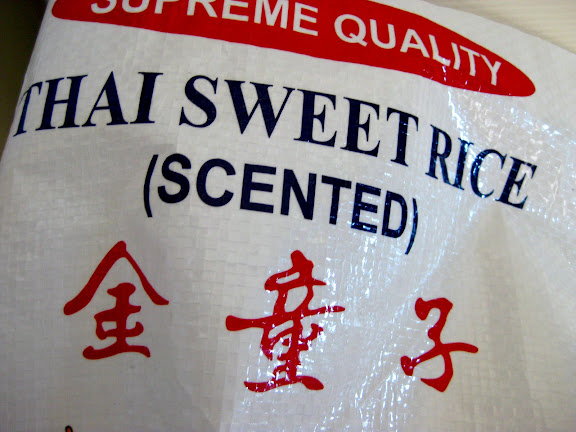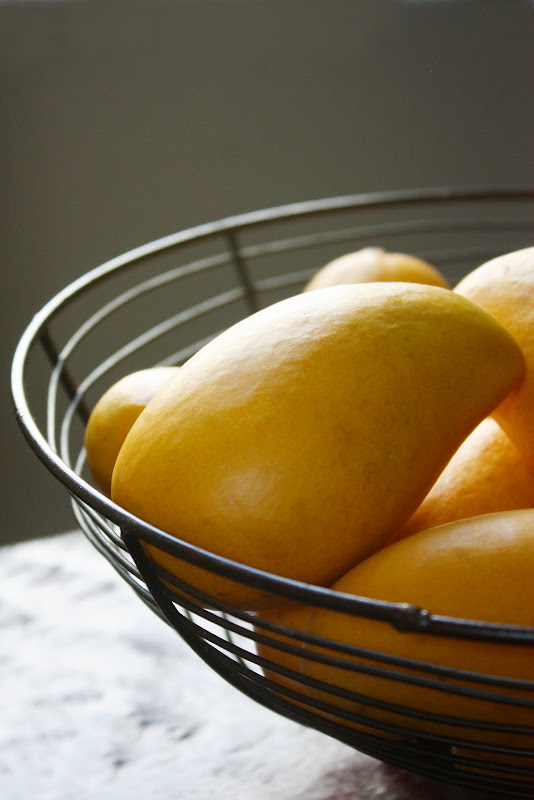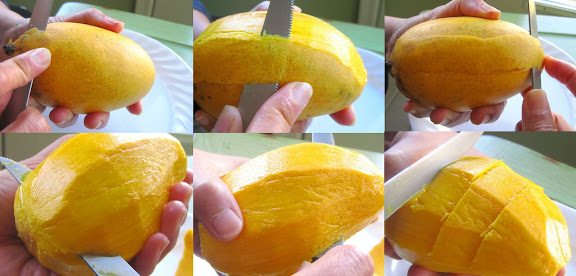
Now that I have cleared up a few things on how to choose mangoes, how to peel and slice mangoes, and quality canned coconut milk, I’m moving on to the last item before getting to the recipe for Thai Sweet Coconut Sticky Rice and Mango. While most Southeast Asians take the terms for granted, those who did not grow up eating this long grain glutinous rice often find themselves confused about just what kind of rice it is. What does it mean — sticky? An attempt to call it “glutinous rice” doesn’t help all that much. You don’t solve a problem by giving it another name.
The thing is, any short grain rice is considered sticky in comparison to its long grain counterparts. This is due to the difference in starch contents which vary from one type of rice to another. Higher starch content = stickiness. (Even within the same type of rice you see a difference in starch content. In general, a new crop is more starchy than an old crop.) Sushi rice is often called sticky rice. The types of rice used in Korean cuisine are also referred to as sticky rice. If you’re confused, your confusion is completely justified.
Though several types of short grain rice are lumped together into the “sticky” category, only one kind of rice is used to make steamed sticky rice common in the Thai and Laotian cultures. Wiki has a pretty good article that spells it all out for you; go straight to the section on Thai-Laotian tradition, if you’re short on time.
In terms of helping you to pick out the right type of rice, I could tell you that this type of rice is opaque and not translucent like regular long grain rice. But that’s not to help much, because all short grain rice, even the types that cannot and should not be used in place of Thai sticky rice, is opaque. Brand names also vary and may not always be written in Engligh.
The best thing is to commit to memory the circled portion in the picture below. If you can read Thai, good for you. If you can’t, think of it as a single-unit logogram — an image of the lexical kind.
(Added August 9th, 2013: 3 Horses is the brand I recommend and one of the easiest to find. It looks like this. Keep the picture on your phone as a reference.)

Here’s your sticky rice in four languages, namely English, Chinese, Laotian, Vietnamese, Thai (in that order), and, as a bonus, one unintelligible language found just above the net weight.

[Note: Do not let the “scented” part confuse you. The rice doesn’t have any artificial “scent” added. This is different from the “scented” versus “unscented” designation you find on deodorant or toilet paper packages. In this case, they’re just telling you that the rice is the superior kind of sticky rice that is naturally fragrant.]
There are a few sub-categories within the same type of Thai sticky rice. All of them work just fine. As long as the package bears the name ข้าวเหนียว and the grains look opaque white, you’re on the right track.
Related Posts:
The Easiest Way to Make Perfectly-Steamed Sticky Rice
Thai Mango and Sweet Coconut Sticky Rice














